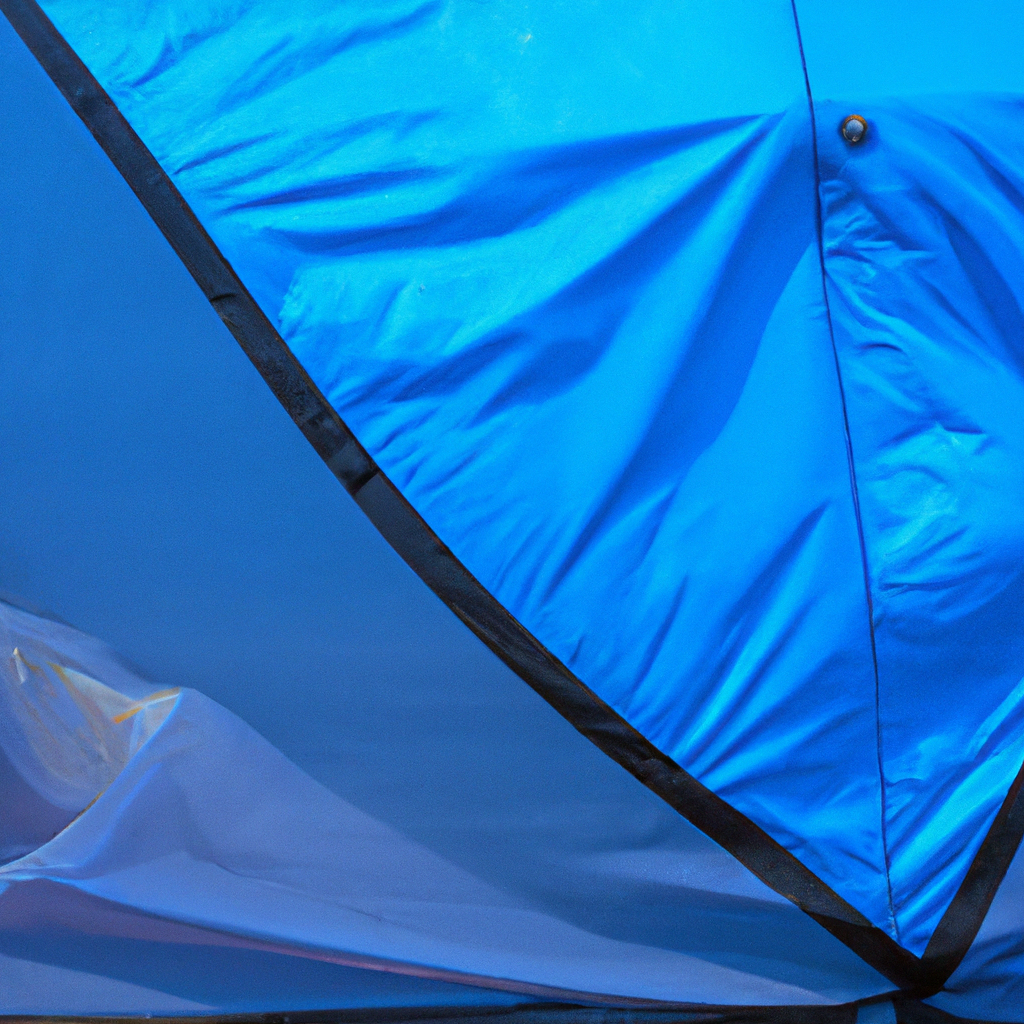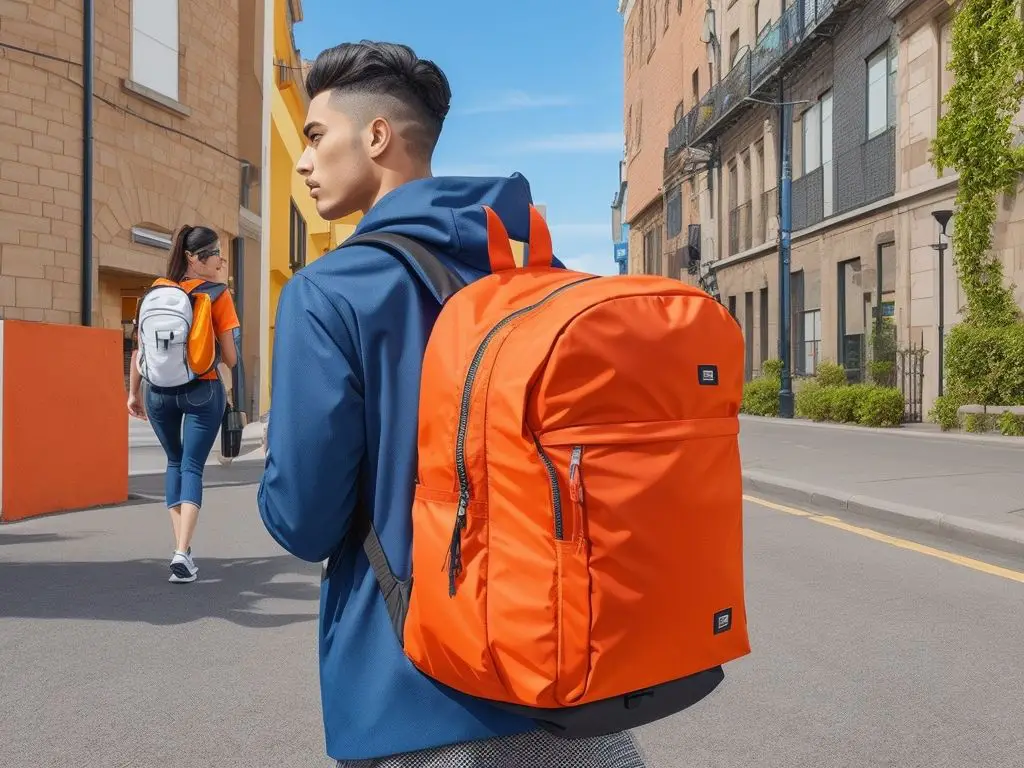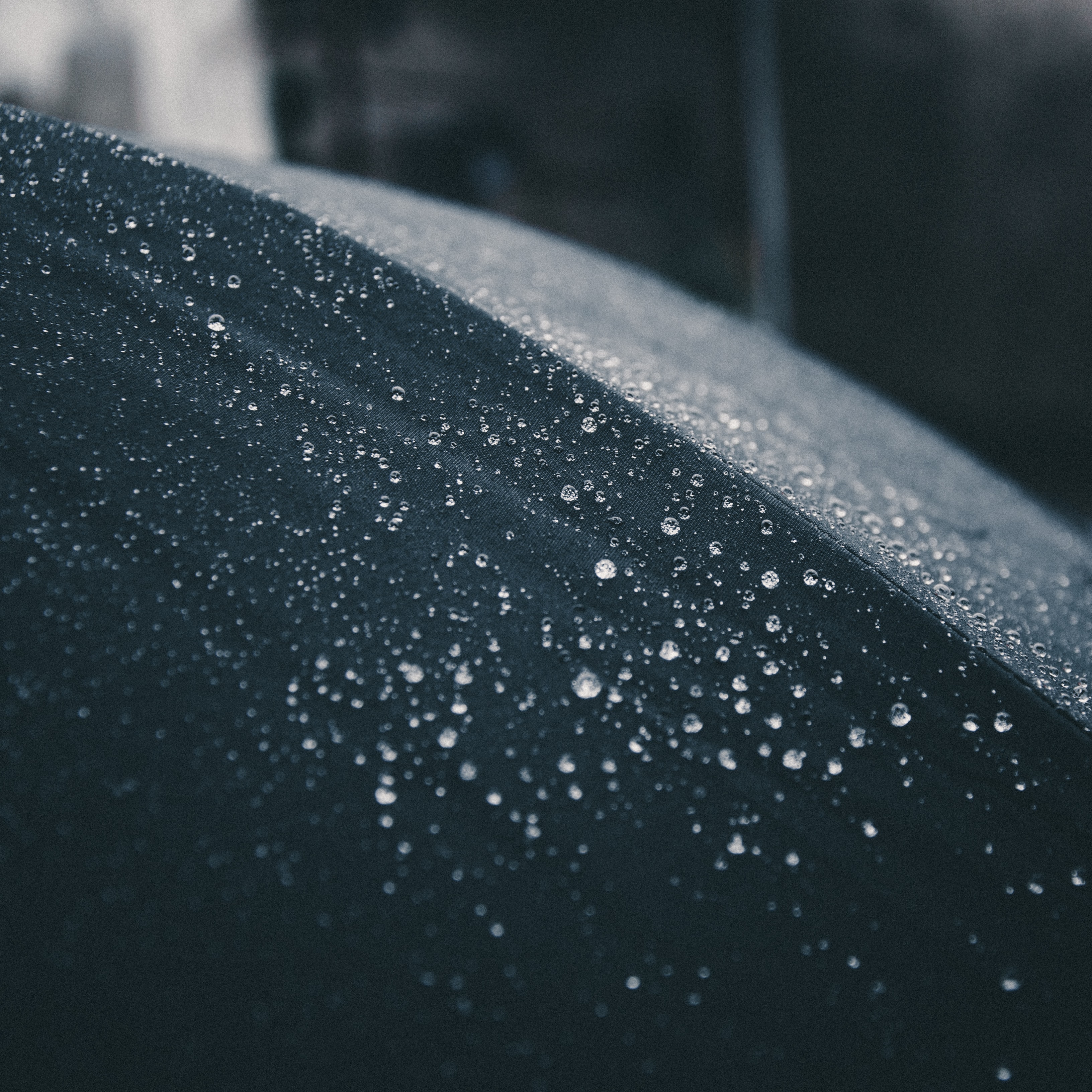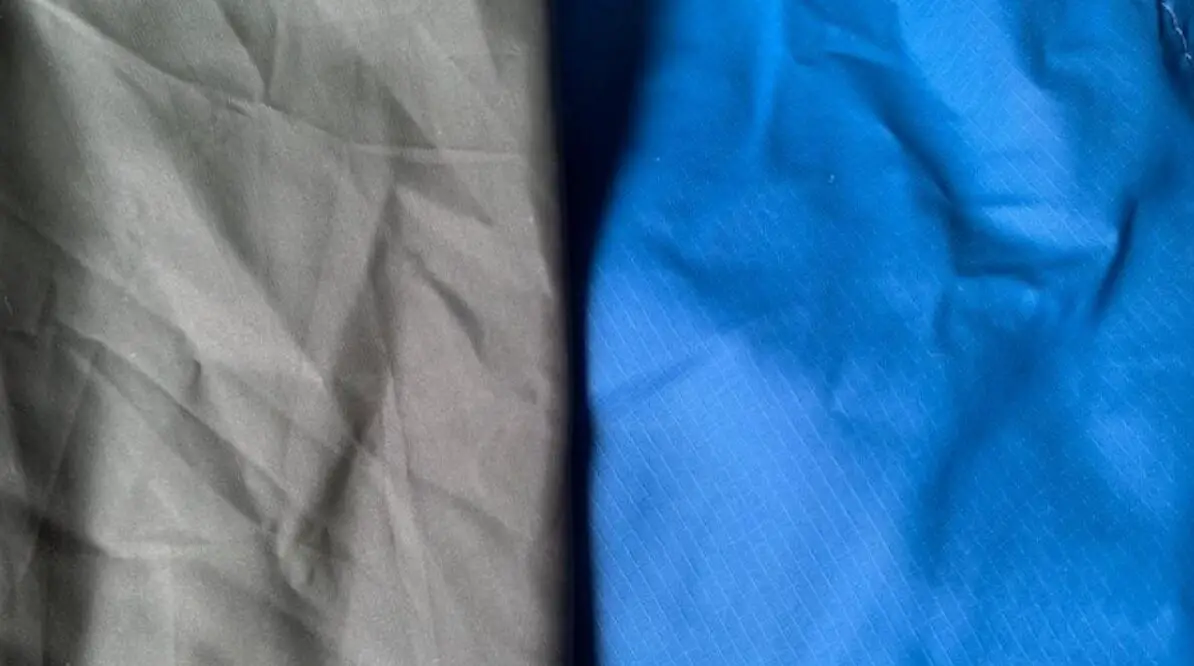Nylon fabric is a popular choice for outdoor gear due to its durability, lightweight nature, and resistance to water. However, not all nylon fabrics are created equal. When it comes to outdoor gear, two common variations are 30D and 70D nylon.
Understanding the differences between these two materials is crucial in choosing the right gear for your outdoor adventures. In this article, we will explore the basics of nylon fabric, the key differences between 30D and 70D nylon, how to choose the right nylon for your outdoor gear, and the care and maintenance of nylon gear.
We will also touch upon the environmental impact of nylon production and the recent innovations in eco-friendly nylon. Let’s dive in!## Understanding the Basics of Nylon Fabric
Nylon fabric is a synthetic material that was first introduced in the 1930s. It quickly gained popularity due to its strength, durability, and versatility. Nylon is created through a chemical process called polymerization, in which individual molecules are combined to form long chains. This results in a fabric that is both lightweight and strong.
One of the key characteristics of nylon fabric is its ability to withstand high temperatures. This makes it an ideal choice for applications that involve heat, such as automotive parts and industrial equipment. Additionally, nylon fabric is resistant to mildew, making it suitable for outdoor use in humid environments.
Another advantage of nylon fabric is its excellent resistance to abrasion. This means that it can withstand repeated rubbing or scraping without showing signs of wear and tear. For this reason, nylon fabric is commonly used in products that require durability, such as backpacks, luggage, and sports equipment.
What is 30D Nylon?
30D nylon refers to nylon fabric with a denier of 30. Denier is a unit of measurement that determines the thickness and weight of a fabric. A lower denier, such as 30D, indicates a lighter and more lightweight fabric. 30D nylon is commonly used in ultralight gear, such as backpacks, tents, and sleeping bags, where reducing weight is a top priority for outdoor enthusiasts.

In addition to its lightweight nature, 30D nylon offers excellent water resistance. This makes it an ideal choice for outdoor gear that may be exposed to rain or other wet conditions. The fabric’s tight weave and water-repellent properties help to keep the contents of backpacks and tents dry, providing added convenience and protection.
Furthermore, 30D nylon is known for its quick-drying capabilities. This is particularly beneficial for outdoor enthusiasts who may encounter wet conditions during their adventures. The fabric’s ability to dry rapidly helps to prevent the growth of mold and mildew, ensuring that gear remains fresh and odor-free.
What is 70D Nylon?
On the other end of the spectrum, 70D nylon refers to nylon fabric with a denier of 70. With a higher denier, 70D nylon is thicker and more robust than 30D nylon.
This makes it suitable for gear that requires more durability, such as heavy-duty backpacks, duffel bags, and tarps. The increased thickness of 70D nylon provides enhanced abrasion resistance, allowing the gear to withstand harsh outdoor conditions.

In addition to its durability, 70D nylon offers excellent tear resistance. This means that it can withstand significant force without ripping or tearing. This makes it an ideal choice for applications that involve heavy loads or rough handling, such as luggage and outdoor gear.
Furthermore, 70D nylon is known for its excellent color retention. This means that the fabric’s vibrant colors will remain intact even after prolonged exposure to sunlight. This makes it a popular choice for products that require long-lasting aesthetics, such as outdoor flags and banners.
Key Differences Between 30D and 70D Nylon
While both 30D and 70D nylon have their advantages, there are several key differences that outdoor enthusiasts should consider when choosing between the two:
Durability and Strength
One of the main distinctions between 30D and 70D nylon is their durability and strength. 70D nylon, being thicker and more robust, offers superior resistance to abrasion and tearing compared to 30D nylon. This means that gear made from 70D nylon is more likely to withstand the rigors of rugged or intense outdoor activities, such as trekking through dense forests or climbing rocky terrains. The increased durability of 70D nylon makes it a reliable choice for adventurers who require gear that can handle these demanding conditions.
However, if reducing weight is a priority and you don’t expect your gear to be subjected to extreme conditions, 30D nylon can still provide sufficient durability and strength for lightweight backpacking or hiking trips. It strikes a balance between durability and weight, making it a suitable choice for those who prioritize lightweight gear.
Weight and Packability
The weight and packability of nylon gear are important considerations, especially for long-distance backpackers or those who prefer to travel light. Due to its thinner nature, 30D nylon is significantly lighter than 70D nylon. This makes gear made from 30D nylon ideal for ultralight backpacking, where every ounce matters. The reduced weight of 30D nylon gear allows for easier and more comfortable movement during long hikes or treks.
Additionally, 30D nylon gear is more compressible, allowing it to be packed into smaller spaces and saving valuable room in your backpack. This is particularly advantageous for backpackers who need to optimize their packing space or for those who prefer to carry minimal gear.
On the other hand, 70D nylon is heavier and less compressible. While this may be a disadvantage in terms of weight and packability, the increased thickness of 70D nylon provides added structure and support. This makes it suitable for gear that requires more stability, such as larger backpacks or duffel bags. The added weight of 70D nylon gear can be justified by the enhanced durability and stability it offers.
Water Resistance and Breathability
Nylon is known for its water resistance, and both 30D and 70D nylon fabrics exhibit this characteristic. However, there can be slight variations in the water resistance and breathability between the two.
When it comes to water resistance, 70D nylon has the edge due to its thicker construction. Gear made from 70D nylon is more likely to repel water and keep your belongings dry in wet conditions. This is particularly important for outdoor activities that involve exposure to rain or water, such as camping or kayaking. The increased water resistance of 70D nylon gear provides peace of mind and ensures that your gear remains dry and functional.

On the other hand, 30D nylon, while still water-resistant, may not offer the same level of protection against heavy rain or prolonged exposure to moisture. It is important to consider the specific weather conditions you will encounter during your outdoor adventures and choose the appropriate nylon fabric accordingly.
In terms of breathability, 30D nylon has the advantage. The thinner fabric allows for better airflow, preventing excessive moisture buildup and promoting breathability. This can be especially beneficial during extended physical activities or in hot and humid climates. The enhanced breathability of 30D nylon gear helps to keep you comfortable and dry, reducing the risk of discomfort or skin irritations caused by excessive sweating.
Ultimately, the choice between 30D and 70D nylon depends on your specific needs and preferences. Consider the type of outdoor activities you will be engaging in, the weight you are willing to carry, and the weather conditions you are likely to encounter. By carefully evaluating these factors, you can make an informed decision and select the nylon fabric that best suits your outdoor gear requirements.
Choosing the Right Nylon for Your Outdoor Gear
When selecting nylon gear for your outdoor adventures, it’s important to consider your specific needs and requirements. Here are some factors to consider:
Factors to Consider
- Activity: Determine the nature of your outdoor activities and the potential wear and tear your gear may encounter. If you engage in rugged activities that require maximum durability, opt for gear made from 70D nylon. For lightweight adventures where weight is a top concern, gear made from 30D nylon will suffice.
When it comes to outdoor gear, choosing the right material is crucial. Nylon is a popular choice due to its strength, durability, and resistance to abrasion. However, not all nylon is created equal. Different activities call for different types of nylon, and understanding the differences can greatly enhance your outdoor experience.
- Weather Conditions: Take into account the typical weather conditions you will encounter. If you anticipate frequent rain or wet environments, gear made from 70D nylon will provide better water resistance. For activities in hot and humid climates, 30D nylon’s breathability may be more desirable.
When planning your outdoor adventures, it’s important to consider the weather conditions you’re likely to face. If you’re heading into a rainy or wet environment, having gear that offers excellent water resistance can make a world of difference. On the other hand, if you’re venturing into hot and humid climates, prioritizing breathability can help keep you comfortable and prevent excessive sweating.
- Load Capacity: Consider the weight and volume of the gear you will be carrying. If you require larger backpacks or bags with higher load capacities, opting for 70D nylon will ensure the necessary durability and support.
Carrying gear is an essential part of any outdoor adventure, and having the right load capacity is crucial. If you’re planning on carrying heavier loads or need a backpack with a higher load capacity, choosing gear made from 70D nylon will provide the necessary durability and support to handle the weight.
Gear-Specific Recommendations
- Backpacks: Lightweight backpacks that prioritize weight savings can be made from 30D nylon. However, if you anticipate carrying heavier loads or require increased durability, consider backpacks made from 70D nylon.
When it comes to backpacks, finding the right balance between weight and durability is key. If you’re planning on embarking on a lightweight adventure where every ounce counts, opting for a backpack made from 30D nylon can help you save weight without compromising on functionality. However, if you anticipate carrying heavier loads or need a backpack that can withstand rugged conditions, choosing gear made from 70D nylon will provide the necessary durability and support.
- Tents and Sleeping Bags: Ultralight tents and sleeping bags can benefit from the weight savings and packability of 30D nylon. However, if you expect your gear to endure extreme conditions or rough handling, gear made from 70D nylon will offer better longevity.
When it comes to tents and sleeping bags, weight and packability are often key considerations. If you’re a fan of ultralight camping and prioritize weight savings, opting for gear made from 30D nylon can help you keep your pack light and compact. However, if you anticipate facing extreme conditions or rough handling, choosing gear made from 70D nylon will ensure better longevity and durability.
- Accessories: Smaller accessories like stuff sacks, tarps, or rain covers can be made from either 30D or 70D nylon, depending on your preferences for weight, durability, and weather resistance.
When it comes to accessories, personal preferences play a significant role in determining the ideal type of nylon. Smaller items like stuff sacks, tarps, or rain covers can be made from either 30D or 70D nylon, depending on your priorities. If weight is a top concern, opting for 30D nylon can help you save ounces. However, if you prioritize durability and weather resistance, gear made from 70D nylon might be a better choice.
Care and Maintenance of Nylon Outdoor Gear
Proper care and maintenance can significantly extend the lifespan of your nylon gear. Here are some tips:
Cleaning and Storing Your Gear
- Cleaning: Follow the manufacturer’s instructions for cleaning your specific gear. In general, use a mild detergent and warm water to clean your gear. Avoid using harsh chemicals or bleach, as they can damage the fabric. Rinse thoroughly and air dry before storing.
- Storage: Store your nylon gear in a clean, dry place. Avoid storing your gear in damp or humid conditions, as this can lead to mold or mildew growth. If possible, hang your gear or store it loosely to maintain its shape and prevent creases.
Repairing Nylon Gear
Small tears or punctures in your nylon gear can typically be repaired with patch kits specifically designed for outdoor gear. Follow the instructions that come with the patch kit, ensuring a clean and dry surface before applying the patch. For larger or more significant damage, consider contacting the manufacturer for repairs or replacements.
The Environmental Impact of Nylon Production

While nylon offers numerous benefits for outdoor gear, its production does have some environmental concerns. Here are a few sustainability concerns associated with nylon:
Sustainability Concerns
Environmental impact of nylons and polyesters.
- Energy Consumption: The process of manufacturing nylon requires a significant amount of energy, which contributes to carbon emissions. Efforts are being made to minimize the energy requirements and invest in renewable energy sources.
Manufacturing nylon involves several energy-intensive steps. From the production of raw materials to the spinning and weaving processes, each stage requires a substantial amount of energy.
The energy consumption not only contributes to greenhouse gas emissions but also puts a strain on non-renewable resources. To address this concern, manufacturers are increasingly adopting energy-efficient technologies and exploring alternative energy sources, such as solar and wind power.
These initiatives aim to reduce the carbon footprint of nylon production and promote a more sustainable manufacturing process.
- Chemical Pollution: The production of nylon involves the use of various chemicals, some of which can be harmful to the environment if not properly managed. Proper waste management and water treatment are essential to mitigate these environmental impacts.
During the production of nylon, chemicals such as adipic acid and hexamethylene diamine are used, which can have adverse effects on ecosystems if released into the environment without proper treatment.

To address this concern, manufacturers are implementing strict waste management practices and investing in advanced water treatment systems. These measures aim to minimize the release of harmful chemicals into water bodies and ensure that the production process has minimal impact on the environment.
- Land and Water Resources: The production of nylon requires the use of land and water resources. Sustainable practices, such as responsible sourcing and efficient water usage, can help minimize the impact on these resources.
Nylon production requires land for the cultivation of raw materials, such as petroleum or plant-based sources. Additionally, water is a crucial component in various stages of the manufacturing process, including the extraction of raw materials and the dyeing and finishing processes.
To address the impact on land and water resources, manufacturers are implementing sustainable sourcing practices, such as using recycled or bio-based materials. Furthermore, water conservation measures, such as recycling and reusing water, are being adopted to minimize the overall water footprint of nylon production.
Innovations in Eco-Friendly Nylon
Despite the environmental concerns surrounding nylon production, innovative solutions are being developed to create eco-friendly nylon.
These include the use of recycled nylon, also known as ECONYL, which is made from post-consumer waste such as fishing nets and industrial waste. Additionally, researchers are exploring bio-based alternatives to petroleum-derived nylon, using renewable resources such as castor oil.
Recycled nylon, such as ECONYL, helps reduce the demand for new raw materials and diverts waste from landfills or oceans. By repurposing materials like discarded fishing nets, which are a major source of marine pollution, recycled nylon contributes to the conservation of marine ecosystems. Similarly, bio-based nylon alternatives offer a more sustainable option by utilizing renewable resources and reducing reliance on fossil fuels.
By supporting brands that prioritize sustainability and investing in gear made from recycled or eco-friendly nylon, outdoor enthusiasts can contribute to a more sustainable future.
Conclusion
In conclusion, the choice between 30D and 70D nylon for outdoor gear depends on various factors such as durability, weight, water resistance, and breathability. Understanding the differences and considering your specific needs and preferences will help you make an informed decision.
Additionally, proper care, maintenance, and responsible consumption can contribute to the longevity and sustainability of your nylon gear. As the outdoor industry continues to innovate, adopting eco-friendly nylon alternatives and supporting sustainable practices will help mitigate the environmental impact of nylon production.
So gear up, embark on your outdoor adventures, and make wise choices when it comes to your nylon gear!




